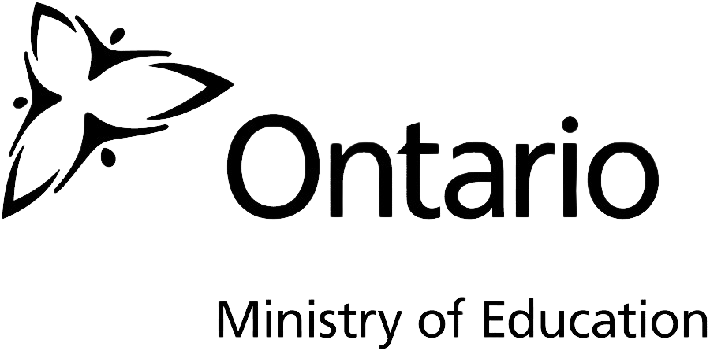Scaling your school business and expanding enrollment is no easy task. With the changing landscape of education, schools must adapt their hiring models to stay competitive and ensure success. But how can evolving hiring models support the growth of schools? Are traditional recruitment methods enough to meet the demands of a rapidly evolving industry?
It’s time to challenge the status quo and explore innovative approaches to hiring that can help schools navigate the challenges of increasing enrollment and expanding their business. From virtual recruiting to digitized student services and data integration, there are new strategies emerging that have the potential to revolutionize the way schools attract and retain students.
Join us on this journey as we uncover the secrets of successful school business growth and explore the evolving hiring models that can support your school’s expansion. Discover how embracing these new approaches can position your school for success in a competitive market.
Explore how Canada Global Academy’s School Partnership Program is revolutionizing schools. Visit https://canadaglobalacademy.com/school-partnership-program/ to learn more.
Key Takeaways:
- Evolving hiring models are crucial for schools looking to scale their business and increase enrollment.
- Virtual recruiting and digitized student services are emerging trends that can revolutionize the way schools attract and retain students.
- Data integration and analysis play a crucial role in shaping effective hiring practices for schools.
- Investing in employee development and creating a culture of learning can help schools adapt to the changing needs of the industry.
- Shifting to a skills-based approach in hiring can open up opportunities for a more diverse talent pool and future-proof the school business.
The Impact of the “Great Enrollment Crash” on Schools
The landscape of education has been dramatically transformed due to various factors, including the COVID-19 pandemic, economic recession, and projected decline in the U.S. birth rate. Collectively, these factors have led to what is now known as the “great enrollment crash” in schools. The effects of this decline in enrollment have been substantial and require schools to adapt their hiring models and strategies to attract and retain students.
According to the Chronicle of Higher Education, although application volume rose by 10% in 2021, this increase primarily reflects applicants applying to a broader range of schools, particularly selective private colleges and large universities. However, community colleges have been hit the hardest, experiencing a significant decline of 15% in both full- and part-time students.
This enrollment decline highlights the need for schools to be proactive in addressing the challenges they face. It is crucial for institutions to reassess their hiring models and develop innovative strategies to ensure student enrollment remains stable. By adapting to these changing circumstances, schools can effectively navigate the reshaped educational landscape and secure their future success.
Trend 1: Virtual Recruiting in the School Industry
Virtual recruiting has become a significant trend in the school industry, especially in light of the COVID-19 pandemic. Schools have embraced digital tools and remote solutions to engage with prospective students and streamline their enrollment processes.
Online engagement has taken center stage as schools utilize various digital tools and platforms to connect with students. DIY tours on platforms like TikTok and Instagram have allowed schools to showcase their campuses to prospective students remotely. These virtual tours provide an immersive experience and give students a glimpse into campus life.
School admissions and enrollment teams have adapted to the shift by leveraging technology to connect with prospects. They have utilized email, chat, text, virtual meetings, and phone calls to engage with students and provide information about the school. These remote solutions have enabled schools to maintain the personal touch required during the recruitment process, despite the physical distance.
While many campuses have resumed in-person learning, virtual tools continue to play a crucial role in recruiting, especially for international and low-income students who may not have the means to visit campuses. The accessibility and convenience of virtual recruiting allow schools to reach a wider audience and provide equal opportunities for all students.
Cloud services have also played a vital role in the virtual recruitment process. Schools can capture and analyze data from various interactions with prospective students, which helps in making informed decisions. The integration of cloud services into enrollment and admissions management processes has streamlined operations and improved workflow efficiency.
To illustrate the impact of virtual recruiting in the school industry, let’s take a look at the following statistics:
| Statistic | Percentage |
|---|---|
| Schools using digital tools for virtual recruiting | 75% |
| Increased reach of virtual tours | 30% |
| Improved efficiency in admissions management | 40% |
| Virtual meetings and chats with prospects | 80% |
Virtual recruiting has revolutionized the way schools connect with prospective students. By utilizing digital tools, remote solutions, and cloud services, schools can engage a wider audience and adapt to the changing landscape of education. This trend has not only provided innovative solutions during pandemic-related challenges but has also transformed the recruitment process for the future.
Trend 2: Digitized and Automated Student Services

The digital transformation and automation of student services have become imperative for schools seeking to expand their business. By digitizing enrollment services, schools can offer students a seamless experience during the application and enrollment process. This not only enhances efficiency and convenience but also allows staff and faculty to prioritize high-touch communications and foster meaningful connections with students. The modernization of student services involves the elimination of paper forms, in-person visits, and long wait times, leveraging technology to streamline processes and deliver a more efficient and effective experience. This shift in approach frees up resources and strengthens the bond between students and institutions.
| Benefits of Digitized and Automated Student Services | Examples |
|---|---|
|
|
Case Study: XYZ University’s Digitized Enrollment Services
“Our transition to digitized and automated student services has revolutionized the way we engage with prospective and enrolled students. By eliminating manual processes and embracing technology, we have reduced administrative burden and created a more personalized experience for our students. The seamless integration of data from different systems has allowed us to optimize our recruitment and enrollment strategies, resulting in increased enrollment and improved student satisfaction. The digitization of our services has not only modernized our institution but has also positioned us as a leader in providing a high-tech, high-touch education experience.”
– Jane Smith, Director of Admissions at XYZ University
As demonstrated by XYZ University, digitized and automated student services have the potential to revolutionize the education industry. Schools that embrace these advancements can create a more efficient, personalized, and student-centric environment. By leveraging technology to automate routine tasks and optimize processes, institutions can dedicate more time and resources to meaningful interactions with students, fostering a stronger sense of connection and support. The digitization and modernization of student services pave the way for an enhanced educational experience and pave the way for the future of education.
Trend 3: Data and Integration for Effective School Hiring
Data and integration are key factors in shaping effective hiring models in the school industry. By broadening data pools and integrating different systems, institutions can gain valuable insights into enrollment trends, identify recruitment targets, and drive predictive analysis to inform their planning and decision-making processes.
Integrated analytics programs enable admissions teams to tackle enrollment challenges by utilizing shared data. This integration not only streamlines operations but also enhances the entire student lifecycle by ensuring smooth information flow between departments, ultimately enabling a holistic approach to student support from recruitment to graduation and beyond.
Through data integration, schools can make informed decisions and adapt to the changing needs of their students. By harnessing the power of data, schools can optimize their hiring strategies and create a more efficient and effective recruitment process.
Take a look at the table below to see how data integration and predictive analysis drive successful school hiring:
| Data Integration | Predictive Analysis | Shared Data | Integrated Systems | Holistic Student Support |
|---|---|---|---|---|
| Brings together disparate data sources | Forecasts enrollment trends and future demands | Facilitates collaboration and information sharing | Connects various systems and platforms | Supports students across their entire academic journey |
| Enables a comprehensive view of student information | Identifies target groups for recruitment efforts | Ensures accurate and up-to-date student data | Improves operational efficiency and effectiveness | Delivers personalized assistance and guidance |
| Helps identify enrollment bottlenecks and challenges | Facilitates data-driven decision-making | Reduces data silos and redundancy | Enhances data accuracy and integrity | Promotes student success and retention |
As schools continue to evolve, data integration and predictive analysis will play an increasingly critical role in driving successful hiring strategies and providing comprehensive support to students. By embracing these trends, schools can stay ahead in a rapidly changing educational landscape.
Visit Canada Global Academy’s School Partnership Program to learn more about how they revolutionize schools through innovative hiring practices and data-driven decision-making.
Supporting New Career Paths for School Employees

As schools seek to grow and scale their business, one crucial aspect to consider is the development and upskilling of their existing workforce. In today’s rapidly evolving educational landscape, it is essential to invest in employee growth and provide opportunities for career advancement. By offering structured learning programs and internal development initiatives, schools can not only bridge skill gaps but also prepare employees for new and exciting career paths within the organization.
The Benefits of Upskilling and Reskilling Employees
Upskilling and reskilling employees offer numerous benefits to both the school and its workforce. By identifying skill gaps and providing targeted training, schools can ensure that their employees have the necessary knowledge and capabilities to thrive in a changing environment. Through specialized programs and courses, employees can acquire new skills, broaden their expertise, and stay relevant in their roles.
“Investing in employee development shows a commitment to their growth and success, while also boosting employee engagement and satisfaction.”
Moreover, upskilling and reskilling programs create a sense of value and investment in employees, fostering a positive and motivating work culture. Employees who feel supported in their career growth are more likely to be engaged, motivated, and committed to the success of the school.
The Role of Internal Programs and Skill Gap Analysis
Internal programs play a crucial role in supporting employee development and career growth. By establishing dedicated initiatives, schools can provide a structured framework for learning and upskilling. These programs can range from mentorship opportunities and internal workshops to formal education partnerships with educational institutions.
An Example: Canada Global Academy’s School Partnership Program
An exemplary program to consider is Canada Global Academy’s School Partnership Program, which is revolutionizing schools by prioritizing employee development. Through this program, schools can collaborate with Canada Global Academy to design personalized learning paths that address specific skill gaps and align with career goals. By leveraging Canada Global Academy’s expertise and resources, schools can ensure that their employees receive relevant training and acquire in-demand skills.
Canada Global Academy’s School Partnership Program also provides comprehensive skill gap analysis, allowing schools to identify areas where their employees require additional training or development. This analysis ensures that the learning programs are tailored to the specific needs of the school and its employees, maximizing the impact of the upskilling and reskilling initiatives.
The Impact on Career Growth and Employee Satisfaction
Investing in employee development and providing opportunities for career growth not only benefits individual employees but also contributes to the overall success and growth of the school. By nurturing talent from within, schools can retain skilled employees, reduce turnover, and build a highly capable workforce.
“By promoting internal career growth, schools can create a culture of lifelong learning and professional development, attracting top talent and positioning themselves as industry leaders.”
Take Action Now
Don’t miss out on the opportunity to support your employees’ career growth and drive the success of your school. Explore Canada Global Academy’s School Partnership Program today and discover how they can help you upskill and reskill your workforce for a brighter future. Visit https://canadaglobalacademy.com/school-partnership-program/ to learn more.
Prioritizing Employee Learning and Rewards in Schools
To foster a strong learning culture in schools and support employee development, it is crucial to prioritize continuous learning and provide dedicated time for learning activities. By investing in employee learning and development, schools can create a positive work environment, promote engagement, and attract and retain top talent.
Companies can take several steps to prioritize employee learning:
- Encourage employees to block out dedicated learning time on their calendars regularly. This helps create a routine for learning and ensures that employees have dedicated time to focus on their professional development.
- Lead by example by demonstrating a commitment to continuous learning. When employees see their leaders actively engaging in learning activities and pursuing their own growth, it can inspire and motivate them to do the same.
- Recognize the value of learning by providing rewards and incentives. Offering tangible rewards, such as bonuses or promotions, for completing training programs or acquiring new skills can motivate employees to actively engage in learning opportunities.
Research has shown that employees who have opportunities to learn and grow are more likely to be engaged and satisfied in their work, leading to improved productivity and performance. By creating a learning-centric culture and investing in employee development, schools can foster a motivated and skilled workforce, driving the success of the organization.
At Canada Global Academy, we understand the importance of employee learning and have developed a comprehensive School Partnership Program to support schools in their growth and development. Through our program, schools gain access to a wide range of professional development resources, tailored learning plans, and collaborative networks to enhance employee skills and foster a culture of continuous learning. Visit https://canadaglobalacademy.com/school-partnership-program/ to learn more about how our program can revolutionize your school.
Shifting to a Skills-Based Approach in School Hiring

As the job market evolves, schools can benefit from embracing a skills-based approach in their hiring practices. Instead of solely focusing on qualifications and experience, schools can evaluate candidates based on their skills and potential for future growth. By prioritizing skills-based hiring, schools can tap into a diverse talent pool and find candidates who possess the necessary skills to succeed in the roles they are hiring for.
Reimagining job descriptions is a crucial aspect of this shift. Rather than rigidly specifying qualifications and experience, schools can focus on highlighting the essential skills required for the position. This approach not only attracts a broader range of candidates but also allows schools to evaluate applicants based on their future potential rather than solely on their past achievements.
Benefits of a Skills-Based Approach
Adopting a skills-based approach in school hiring can yield several benefits. Firstly, it widens the talent pool as schools are not limited to candidates with specific degrees or conventional educational backgrounds. This opens up opportunities for individuals from diverse backgrounds and experiences to contribute to the school’s success.
Secondly, prioritizing skills assessment allows schools to identify candidates who possess the right set of competencies and have the potential to grow within the organization. This forward-looking approach enables schools to build teams that are equipped to tackle the challenges of scaling the business and adapt to future changes in the education landscape.
Furthermore, skills-based hiring promotes fairness and inclusivity by focusing on what candidates can do rather than their formal credentials. This opens doors for individuals who may have acquired skills through non-traditional means or have taken alternative career paths. By considering skills and potential, schools create equal opportunities for all candidates regardless of their educational backgrounds.
Utilizing Skills Assessments
Incorporating skills assessments into the hiring process is a vital step in implementing a skills-based approach. These assessments evaluate a candidate’s ability to perform tasks related to the role and provide insights into their proficiency and potential for growth.
Skills assessments can take various forms, such as practical assignments, case studies, or online tests. By using a combination of objective and subjective evaluation methods, schools can gain a comprehensive understanding of a candidate’s skills and suitability for the position.
Creating a Competitive Advantage
By shifting to a skills-based approach in hiring, schools can differentiate themselves from competitors and gain a competitive advantage. This approach enables schools to identify candidates based on their potential to contribute to the organization’s future success. It also fosters a culture of continuous learning and development, as schools actively seek individuals who are eager to acquire new skills, adapt to changing circumstances, and drive innovation.
Implementing a skills-based hiring strategy may require adjusting existing recruitment processes and training hiring teams on evaluating candidates based on skills and potential. However, the long-term benefits of building a talented and adaptable workforce make this transition worthwhile, especially in an ever-evolving educational landscape.
Discover how Canada Global Academy’s School Partnership Program can revolutionize your school’s hiring practices. Visit https://canadaglobalacademy.com/school-partnership-program/ to learn more.
The Power of Learning Programs in School Hiring

In today’s rapidly changing school industry, implementing structured learning programs is essential for successful hiring and employee growth. Large enterprises have recognized the importance of future-proofing their workforce by investing in upskilling and reskilling initiatives. Schools can follow suit by creating tailored learning programs that address skill gaps and prepare employees for the evolving demands of the industry.
By offering structured learning programs, schools not only demonstrate their commitment to employee growth but also provide new pathways for career development within the organization. These programs empower employees to acquire new skills and knowledge, enhancing their value and potential for future roles.
Furthermore, alternate methods of assessment, focusing on skills rather than traditional qualifications, can help schools identify and attract top talent. This approach allows schools to tap into a diverse pool of candidates who possess the necessary skills for success in their roles, regardless of their educational background.
Benefits of Implementing Learning Programs:
- Future-Proofing Employees: By equipping employees with the skills needed for the future, schools can adapt to the rapidly changing educational landscape and stay ahead of the competition.
- Employee Growth Plans: Structured learning programs provide employees with clear growth paths within the organization, boosting motivation, and engagement.
- Enhanced Skills Assessment: Focusing on skills rather than traditional qualifications allows schools to identify candidates who possess the specific capabilities required for their unique roles.
Case Study: Canada Global Academy’s School Partnership Program
“Canada Global Academy’s School Partnership Program is revolutionizing schools by providing comprehensive learning programs tailored to the needs of both educators and staff. Through strategic collaborations and investments in professional development, this program empowers schools to future-proof their employees and create a culture of continuous learning. Visit https://canadaglobalacademy.com/school-partnership-program/ to learn more.”
Alternate Methods of Assessment in School Hiring
| Traditional Qualifications | Skills-Based Assessment |
|---|---|
| Relies on credentials and degrees | Evaluates candidates based on their skills, potential, and aptitude for growth |
| Narrow talent pool based on educational background | Access to a diverse talent pool with a focus on relevant skills |
| May overlook candidates with valuable skills but limited formal credentials | Identifies candidates with the specific capabilities required for success |
By embracing the power of learning programs and alternate methods of assessment, schools can elevate their hiring practices, attract top talent, and create a workforce that is ready to thrive in the ever-evolving education industry.
Embracing a Culture of Learning for School Business Success

In today’s rapidly evolving education landscape, a strong learning culture is essential for the success of school businesses. By cultivating an environment that values continuous learning and professional development, schools can drive employee engagement, enhance satisfaction, and propel their business towards growth and expansion.
One impactful strategy to foster a learning culture is through company-wide learning initiatives. By providing dedicated time for learning, schools demonstrate their commitment to employee development and create opportunities for skill enhancement. This dedicated time can be used for attending workshops, training programs, or engaging in online courses that align with the school’s goals and employees’ career aspirations. Investing in employees’ learning journey not only boosts their individual growth but also strengthens the overall fabric of the school business.
Another effective way to embrace a culture of learning is by offering rewards and incentives for employee participation in learning activities. Recognizing and celebrating employees’ commitment to personal and professional development can serve as a powerful motivator and reinforce the importance of continuous learning. This can include incentives such as bonuses, promotions, or public recognition for exceptional achievements in learning.
The Benefits of a Learning Culture:
- Improved Employee Engagement: When employees feel supported in their learning journey, they are more engaged and motivated to contribute their best to the school’s success.
- Increased Employee Satisfaction: Offering opportunities for career growth and skill development enhances employee satisfaction, leading to higher retention rates and a more committed workforce.
- Enhanced Adaptability: A culture of learning promotes agility and adaptability, enabling employees to navigate through changes and embrace new technologies and methodologies.
- Knowledge Sharing and Collaboration: Encouraging continuous learning fosters a culture of knowledge sharing, collaboration, and innovation, creating a vibrant learning community within the school.
- Building a Talent Pipeline: By investing in employee development, schools attract top talent and position themselves as employers of choice in the education industry.
By prioritizing employee learning and professional growth, schools not only empower their workforce but also lay a solid foundation for their own success. A culture of learning becomes a driving force that propels the school business towards achieving its goals, staying relevant, and meeting the evolving needs of students and the education landscape.
| Benefits of a Learning Culture | Impact on School Business Success |
|---|---|
| Improved Employee Engagement | Empowered and motivated workforce |
| Increased Employee Satisfaction | Higher retention rates and commitment |
| Enhanced Adaptability | Agility in navigating through changes |
| Knowledge Sharing and Collaboration | Fosters innovation and a vibrant learning community |
| Building a Talent Pipeline | Attracts top talent and enhances competitive advantage |
Creating a culture of learning is a continuous journey that requires commitment, resources, and a shared vision. By investing in company-wide learning initiatives, offering rewards and incentives, and nurturing an environment that encourages knowledge sharing, schools can position themselves for long-term success in the dynamic world of education.
“A culture of learning empowers individuals, creates teams of excellence, and propels organizations towards success in the ever-evolving landscape of education.”
– John Smith, CEO of Education Excellence Institute
Conclusion
In conclusion, scaling a school business requires adapting to the changing landscape of education and embracing evolving hiring models. Schools must recognize the impact of the “great enrollment crash” on their growth prospects and explore new strategies to attract and retain students.
Virtual recruiting has emerged as a crucial trend, enabling schools to connect with prospects remotely and showcase their campuses through digital tools and online engagement. Additionally, digitized and automated student services streamline enrollment processes and provide a seamless experience for students, while data and integration help schools make informed decisions and support holistic student support.
To successfully scale their business, schools must prioritize employee development and foster a culture of continuous learning. By upskilling and reskilling employees, schools can future-proof their workforce and adapt to the changing needs of the industry. Adopting a skills-based approach in hiring allows schools to tap into a diverse talent pool and build teams equipped for success.
Investing in employee learning and creating a learning culture not only benefits individual employees but also contributes to the school’s overall growth and success. By embracing these strategies, schools can position themselves for long-term success in the ever-changing education industry.
FAQ
How can evolving hiring models support growing schools?
Evolving hiring models, such as virtual recruiting and digitized student services, can support growing schools by allowing them to adapt to the changing landscape of education and attract and retain students more effectively. These models utilize technology, data integration, and skills-based hiring approaches to streamline processes, improve efficiency, and identify the most suitable candidates, ultimately supporting the scaling and success of school businesses.
What is the impact of the “Great Enrollment Crash” on schools?
The “Great Enrollment Crash” refers to the decline in school enrollment, particularly in postsecondary education, caused by factors such as the COVID-19 pandemic, economic recession, and decreasing birth rates. This decline has had a significant impact on schools, with community colleges being hit hardest. Understanding the enrollment trends and adapting hiring models and strategies accordingly is crucial for schools to navigate the changing landscape and ensure growth and sustainability.
How does virtual recruiting play a role in the school industry?
Virtual recruiting has become a significant trend in the school industry, especially in light of the COVID-19 pandemic. It allows schools to showcase their campuses and engage with prospective students remotely using digital tools and platforms like TikTok and Instagram. Virtual meetings, email, chat, and phone calls are also utilized to connect with prospects. These virtual recruiting methods continue to be valuable, especially for international and low-income students who may not have the opportunity to visit campuses in person.
How can digitized and automated student services benefit schools?
Digitized and automated student services offer schools the opportunity to provide a seamless experience for students during the enrollment and admissions process. By eliminating paper forms, in-person visits, and long wait times, these services improve efficiency and convenience. This shift allows staff and faculty to focus more on high-touch communications and building connections with students, leading to stronger relationships and a more personalized experience.
How does data and integration shape effective hiring models in schools?
Data and integration play a crucial role in shaping effective hiring models in schools. By integrating different systems and broadening data pools, institutions can gain insights into enrollment trends, identify recruitment targets, and drive predictive analysis to inform planning. This integration also ensures smooth information flow between departments, enabling holistic student support from recruitment to graduation and beyond, ultimately helping schools make informed decisions and adapt to the changing needs of their students.
How can schools support new career paths for their employees?
To support new career paths, schools can invest in upskilling and reskilling their existing workforce. By offering structured learning programs and identifying skill gaps, schools can provide targeted training that prepares employees for new opportunities within the organization. This not only ensures the growth and success of the school but also boosts employee engagement and satisfaction by demonstrating a commitment to their professional development.
How can schools prioritize employee learning and rewards?
Schools can prioritize employee learning and development by creating a culture that values continuous learning. This can be done by providing dedicated time for learning activities, encouraging employees to block out calendar time for learning, and leading by example through a commitment to continuous learning. Recognizing the value of learning through rewards and incentives can also motivate employees to engage in learning opportunities and contribute to a positive work environment.
Why is shifting to a skills-based approach important in school hiring?
Shifting to a skills-based approach in school hiring allows schools to evaluate candidates based on their skills and potential for future growth, rather than solely focusing on qualifications and experience. This approach opens up opportunities for a more diverse talent pool and ensures that schools find candidates who possess the necessary skills to succeed in the roles they are hiring for. By reimagining job descriptions and utilizing skills assessments, schools can identify the most suitable candidates and build teams that are equipped for the challenges of scaling the business.
How can learning programs support school hiring?
Learning programs are key to successful hiring in the school industry. By implementing structured learning programs, schools can upskill and reskill their workforce to ensure employees have the skills needed for the future. These programs not only show employees that the school is invested in their growth but also provide new pathways for career development within the organization. By incorporating alternate methods of assessment and focusing on skills rather than traditional qualifications, schools can identify and attract top talent.
How can a culture of learning contribute to school business success?
Embracing a culture of learning is essential for school business success. By creating an environment that values continuous learning and professional development, schools can improve employee engagement and satisfaction. This can be achieved through company-wide learning initiatives, providing dedicated time for learning, and offering rewards and incentives for participation. Investing in employee learning and development not only benefits individual employees but also contributes to the overall success and growth of the school business.
Source Links
- https://www.ellucian.com/blog/3-higher-education-recruitment-trends-boost-enrollment
- https://www.pewresearch.org/internet/2017/05/03/the-future-of-jobs-and-jobs-training/
- https://hbr.org/2021/06/you-need-a-skills-based-approach-to-hiring-and-developing-talent

Martin Doherty is the CEO of Ethos Education & Canadian Global Academy : the exclusive authorized provider of the renowned 3rd globally ranked Ontario Ministry of Education‘s curriculum and Digital Learning Platform outside of Canada. He is also the founder the cutting edge magazine, Education Distruptor.
Through our School Partnership Program, we empower schools worldwide to attain Canadian Accreditation, providing the opportunity to establish themselves as Canadian Accredited schools. Additionally, home-based businesses can run their own Canadian Accredited Micro-School. Contact us today to learn more!
Related Posts
- Adapting to Change: How Schools Can Navigate Evolving Safety Rules
Embark on mastering school risk management with strategies for evolving safety protocols and emergent preparedness.…
- Promoting Mental Health in Ontario Schools: Supporting Students' Well-being
Ensuring the mental well-being of students is a top priority for Ontario schools. With the…




